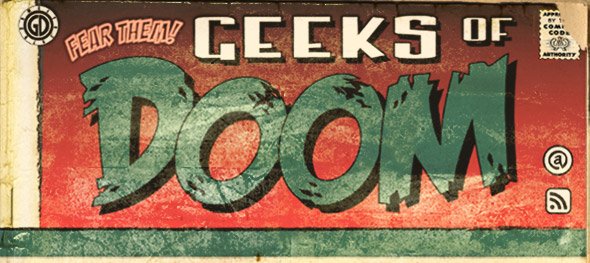
Bob Clampett, one of the true pioneers of American animation, who had directed Warner Brothers cartoons (and helped design characters like Bugs Bunny, Daffy Duck, and Porky Pig) and had massive success with the children’s program Beany and Cecil, died 30 years ago today on May 2, 1984.
Although not one of the more readily household names when it comes to rattling off animation legends (legends like Chuck Jones, Friz Freleng, Tex Avery, Walter Lantz, and Walt Disney among others), Bob Clampett nonetheless took a stranglehold on the genre, infusing it with a wide array of visual absurdities only rivaled by the eclectically demented works of the aforementioned Tex Avery. For Clampett, anything BUT tradition and playing it safe were the true orders of the day. While many of his colleagues at Warner’s during his tenure there (during the 1930s and 1940s) decried Clampett’s alleged plagiarism and a propensity to steal ideas, Bob Clampett still nonetheless carved his niche in a steel block of titanium as some of his cartoons still hold up as not only the best Warner Brothers had to offer — and that’s saying a lot considering the overflowing wellspring of talent that emanated from there — but also some of the best the entire animation field itself had to offer.

It’s no secret that the animated shorts distributed by Warner Brothers (and in particular its animated division, known as “Termite Terrace” during its heyday) had an individual flair and panache all their own. Although the animated films from the Walt Disney studios were rich and absolutely majestic in their approach, handling, and final execution, there is still something very, very clinical about them to this day, a standard which the Disney corporation still utilizes tenfold, churning out finished products that sort of have a “do not touch – behind the velvet rope” kind of status to them. That’s not to belittle them in any way or to not recognize the blood, sweat, and tears that went behind the making of them, but the crucial contrast with the kind of shorts Warner’s were putting out were more akin to jazz music. If Walt Disney’s company was like a Beethoven edifice, then Warner’s/Termite Terrace’s was like a Louis Armstrong edifice, grooving, swinging, soulful, brimming with humor first, the rat-at-tat flurry of humor always at the helm, high on the mast, and then care for and imaginative manifestations of the visuals and the design of the piece. But the power of the films that Warner’s churned out (something that lasted about half a century during its original output run) are their wonderful propensity to make one laugh, till their sides hurt.
And like almost everybody involved in the making of these films, Bob Clampett had a deep understanding as much as anyone there, at what it took to make a successful, FUNNY, animated cartoon. A cartoon where there were absolutely no boundaries in terms of what it took to make one laugh and what steps one took to do that. And without question, one of the most quintessential Clampett cartoons to do that was his masterpiece (among many) Porky in Wackyland. In it, Porky Pig plays the protagonist, who is on an expedition to capture the “Do Do Bird.” What no one told him, and he finds out the hard way, is that he has to go to a place called Wackyland to find him, and when he does, he finds that he’s in a place akin to a crazy house, where every conceivable and not-so-easily conceivable strange, bizarre and hilarious thing that can happen to him does. With fast pace, swift timing, and backgrounds that are garish and vibrant (Clampett was heavily influenced by surrealistic master Salvador Dali, and it shows in many of his films), Porky in Wackyland (which was remade a little bit after Clampett’s exit from Warner’s as Dough For the Do-Do) is one of the arts’ true original films, a stunning piece of lunacy, all handled expertly in the skilled surgeon’s hands of Bob Clampett.

And other Clampett cartoons ranged from wild, reckless, uninhibited turns with Bugs Bunny (The Big Snooze, Falling Hare, What’s Cookin’ Doc?) and Daffy Duck (the incredible Great Piggy Bank Robbery), characters who already were in their own forms of spontaneous abandon under the domes of other directors, but with Clampett at the helm, both characters were in serious needs of straight jackets after he got through with them, glorious swirling breathless messes of insanity that were Bob Clampett productions. While his later work was even more successful, the puppet show Time for Beany, which led to the creation of the much lauded animated cartoon Beany and Cecil, Clampett’s stone was etched in granite with the work he did with Warners. Knowing in hindsight the sort of prickly reputation and off-putting demeanor he was accused of, in a way, only adds to the allure and urgent catch-it-if-you-can style of his animated films. Regardless of what happened when the cells weren’t being drawn and pencil tests weren’t being filmed, time has gone on to show, and rightfully so, that the works of Bob Clampett are monumental testaments to just how funny, wacky, zany, and most importantly, with a sense of class and intelligence animated films can be made. His influence runs sky high, as legions of animators (most notably Ren and Stimpy’s creator John Kricfalusi) still regard Bob Clampett, and not Chuck Jones or Friz Freleng, as the crown jewel of the Warner Brothers/Termite Terrace stable.

Judge for yourself. There are plenty of Clampett shorts readily available for viewing. In fact, most of us grew up watching endless reruns of Looney Tunes and Merrie Melodies and have probably watched Clampett’s work hundreds and hundreds of times in reruns, without ever realizing it. But now, it’s time to realize it and realize how important, influential, and superb the entire animated offerings from the mind of Bob Clampett are. Animation historian Jerry Beck put it perfectly and succinctly when he gave a bite-sized quote which summed up the great career of the great Bob Clampett: “He put the word “˜Looney’ in Looney Tunes.” Indeed.









No Comments »
No comments yet.
RSS feed for comments on this post. TrackBack URL
Leave a comment